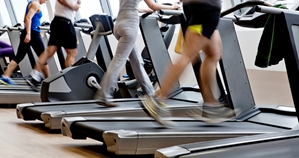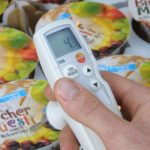If there is one place that indoor air quality needs to be perfectly maintained it’s gyms. Although most are packed with air-conditioning systems and heaters, any problems can lead to an unpleasant environment for members.
This has been highlighted in a recently released study of the air quality in 11 gyms around Lisbon. Researchers from the University of Lisbon in Portugal and the Technical University of Delft in the Netherlands tested and analysed the results and found a concerning level of indoor air pollutants in each environment.
The researchers tested for carbon dioxide and carbon monoxide as well as dust particles and chemicals such as formaldehyde. It was found that when the gyms were busiest (in the late afternoon or evening), the air pollutants were highest and there was more pressure on air quality systems.
Researchers said the gyms exceeded Portuguese limits for carbon dioxide and other chemicals in the environment.
Poor air quality is a problem for any building that people frequent regularly. However, as people breathe more heavily in gyms, weight rooms and yoga studios, ventilation systems need to be working efficiently to flush out any unwanted gases and chemicals.
“When we exercise, we take in more air with each breath and most of that air goes through the mouth, bypassing the natural filtration system,” said Carla Ramos, the lead author of the paper, due to be published in in the journal Building and Environment.
“The pollutants go deeper into the lungs compared to resting situations.”
What are the problems associated with high gas levels?
Gases such as carbon dioxide only pose a major health risk above certain limits, but slightly above average readings can affect humans. People will begin to feel fatigued quicker and believe that the air is thicker and harder to breathe.
Poor indoor air quality can also lead to development of asthma and other respiratory issues in time.
Building owners in Australia are not bound by any specific indoor air quality laws and tests are not carried out by authorities. It is usually up to professionals checking ventilation and air-conditioning systems to monitor the environment and detect any problems.
Professor Guy Marks, a respiratory specialist from the University of Sydney’s Woolcock Institute of Medical Research told the Sydney Morning Herald that the results in this country would be similar.
Options for professionals
There are a number of options available to test indoor air quality. One suggestions would be a multi-function instrument capable of detecting a range of parameters including carbon dioxide, carbon monoxide and humidity.









 Reduce cooking oil costs while ensuring quality
Reduce cooking oil costs while ensuring quality Expert knowledge on CO2 monitoring
Expert knowledge on CO2 monitoring Refrigeration knowledge - in 3 modules
Refrigeration knowledge - in 3 modules



